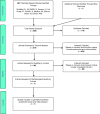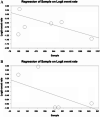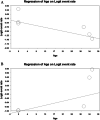The prevalence of sleep disturbances among physicians and nurses facing the COVID-19 patients: a systematic review and meta-analysis
- PMID: 32993696
- PMCID: PMC7522913
- DOI: 10.1186/s12992-020-00620-0
The prevalence of sleep disturbances among physicians and nurses facing the COVID-19 patients: a systematic review and meta-analysis
Abstract
Background: In all epidemics, healthcare staff are at the centre of risks and damages caused by pathogens. Today, nurses and physicians are faced with unprecedented work pressures in the face of the COVID-19 pandemic, resulting in several psychological disorders such as stress, anxiety and sleep disturbances. The aim of this study is to investigate the prevalence of sleep disturbances in hospital nurses and physicians facing the COVID-19 patients.
Method: A systematic review and metanalysis was conducted in accordance with the PRISMA criteria. The PubMed, Scopus, Science direct, Web of science, CINHAL, Medline, and Google Scholar databases were searched with no lower time-limt and until 24 June 2020. The heterogeneity of the studies was measured using I2 test and the publication bias was assessed by the Egger's test at the significance level of 0.05.
Results: The I2 test was used to evaluate the heterogeneity of the selected studies, based on the results of I2 test, the prevalence of sleep disturbances in nurses and physicians is I2: 97.4% and I2: 97.3% respectively. After following the systematic review processes, 7 cross-sectional studies were selected for meta-analysis. Six studies with the sample size of 3745 nurses were examined in and the prevalence of sleep disturbances was approximated to be 34.8% (95% CI: 24.8-46.4%). The prevalence of sleep disturbances in physicians was also measured in 5 studies with the sample size of 2123 physicians. According to the results, the prevalence of sleep disturbances in physicians caring for the COVID-19 patients was reported to be 41.6% (95% CI: 27.7-57%).
Conclusion: Healthcare workers, as the front line of the fight against COVID-19, are more vulnerable to the harmful effects of this disease than other groups in society. Increasing workplace stress increases sleep disturbances in the medical staff, especially nurses and physicians. In other words, increased stress due to the exposure to COVID-19 increases the prevalence of sleep disturbances in nurses and physicians. Therefore, it is important for health policymakers to provide solutions and interventions to reduce the workplace stress and pressures on medical staff.
Keywords: COVID-19; Coronavirus; Healthcare workers; Nurses; Physicians; Sleep disturbances.
Conflict of interest statement
The authors declare that they have no conflict of interest.
Figures







References
-
- Lipsitch M, Swerdlow DL, Finelli L. Defining the epidemiology of Covid-19 — studies needed. N Engl J Med. 2020;382(13):1194–1196. - PubMed
Publication types
MeSH terms
LinkOut - more resources
Full Text Sources
Medical

